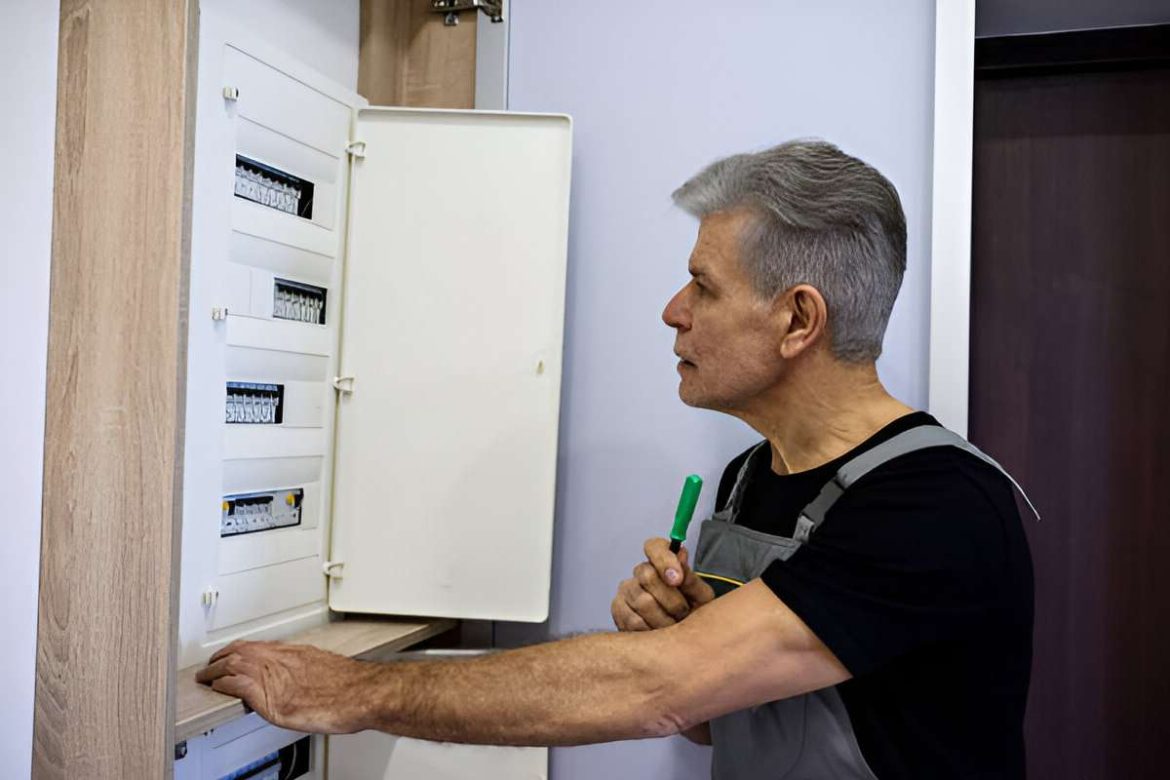Power outages can be disruptive and inconvenient, leaving homeowners and businesses vulnerable to the challenges of darkness and halted operations. A transfer switch offers a solution by seamlessly connecting a generator to your home’s electrical system during power outages.
A transfer switch is a key component for ensuring an uninterrupted power supply. Homeowners can make informed decisions to safeguard their properties and protect valuable equipment from power surges and fluctuations by understanding the different types, installation processes, and safety precautions.
Table of Contents
Understanding Transfer Switch Types
A transfer switch is a device that safely connects your home’s electrical system to a generator during a power outage. There are two primary types:
- Manual transfer switches
Require manual operation to switch between utility power and generator power. They are typically less expensive but require manual intervention during power outages.
- Automatic transfer switches
Automatically switch between power sources when the utility power fails or returns. These provide greater convenience but are generally more costly.
The size of the transfer switch is crucial. It should be rated for the total amperage of the circuits you plan to connect to it.
Installation Process Overview
Installing a transfer switch is a complex task that should be performed by a qualified electrician. The process typically involves:
- Obtaining permits
Check with your local building department for any necessary permits.
- Choosing a location
Select a suitable location for the transfer switch, such as a garage or utility room.
- Electrical panel connection
The electrician will connect the transfer switch to your home’s electrical panel.
- Generator connection
The transfer switch will also be connected to your generator’s output.
- Testing
The electrician will try out the system to ensure it functions correctly.
Generator Compatibility And Maintenance
To ensure maximum performance and safety, it’s essential to select a generator compatible with your transfer switch and electrical system. Consider the following factors:
- Generator size
Choose a generator with sufficient wattage to power essential appliances and equipment.
- Transfer switch compatibility
Ensure the generator’s output is compatible with the transfer switch’s input.
- Fuel type
Select a generator that uses a readily available and suitable fuel source.
- Regular maintenance
Perform routine preservation on your generator to ensure it starts reliably when needed.
By carefully selecting and maintaining your generator, you can maximize its effectiveness during power outages.
Troubleshooting Common Transfer Switch Issues
While transfer switches are designed for reliability, issues can arise. Common problems include:
- Failure to transfer
Check for tripped breakers, loose connections, or generator malfunctions.
- Generator overload
Ensure the generator’s capacity matches the connected load.
- Electrical panel issues
Inspect the electrical panel for any problems.
- Transfer switch malfunctions
Contact a qualified electrician for troubleshooting and repairs.
Regular maintenance and inspections can help stop these issues.
The Future Of Transfer Switches: Smart Technology
The integration of smart technology is transforming the way transfer switches operate. Advanced features include:
- Remote monitoring
Track transfer switch status and generator performance from your smartphone.
- Automatic load shedding
Prioritize essential loads during power outages to prevent overload.
- Integration with smart home systems
Control appliances and manage energy usage efficiently.
- Predictive maintenance
Receive alerts for potential issues to schedule maintenance proactively.
As technology continues to evolve, transfer switches are becoming more intelligent and user-friendly.
Transfer Switch Installation Costs
The cost of installing a transfer switch alter depending on several factors:
- Transfer switch type
Automatic transfer switches are generally more expensive than manual ones.
- Generator size
Larger generators require more robust transfer switches and potentially additional electrical work.
- Electrical panel complexity
Older homes with outdated electrical panels may require additional upgrades.
- Labor costs
The cost of hiring a qualified electrician will vary based on local rates.
It’s essential to obtain quotes from multiple electricians to compare prices and services.
Additional Tips For Power Outages
To maximize your preparedness during power outages, consider the following tips:
- Create an emergency kit
Assemble essential supplies, including water, food, flashlights, batteries, and first aid supplies.
- Develop a communication plan
Establish a communication plan with family members and neighbors in case of extended power outages.
- Protect your appliances
Unplug sensitive electronics to stop damage from power surges when electricity is restored.
- Stay informed
Monitor weather forecasts and make ready for potential power outages.
By taking these precautions, you can mitigate the impact of power outages and ensure the safety and well-being of your household.
Safety Considerations
Safety is paramount when putting and using a transfer switch. Here are some essential precautions:
- Backfeeding prevention
Never connect a generator straight to your home’s electrical system without a transfer switch. This can create a dangerous condition known as backfeeding.
- Proper grounding
Ensure the transfer switch and generator are properly grounded to prevent electrical shocks.
- Carbon monoxide safety
Generators produce carbon monoxide, so operate them outdoors and away from open windows or doors.
- Regular maintenance
Regularly inspect the transfer switch and generator for any signs of wear or damage.
Conclusion
Investing in a transfer switch and generator can provide peace of mind during power outages. However, it’s crucial to prioritize safety and hire a qualified electrician for installation. By understanding the dissimilar types of transfer switches and following safety guidelines, you can ensure your home is prepared for unexpected power interruptions.
Take Control During Power Outages: Get A Free Transfer Switch Quote Today!
Having a good backup power source during outages is essential for peace of mind and continued operation. Now that you’re equipped with the knowledge about transfer switches, it’s time to take action!
Don’t wait until the next blackout to scramble for solutions. Secure a free quote from a qualified electrician to discuss your specific needs and get your home prepped for any power interruptions. Visit www.se.com to find a trusted electrician in your area and request a free transfer switch quote today!



